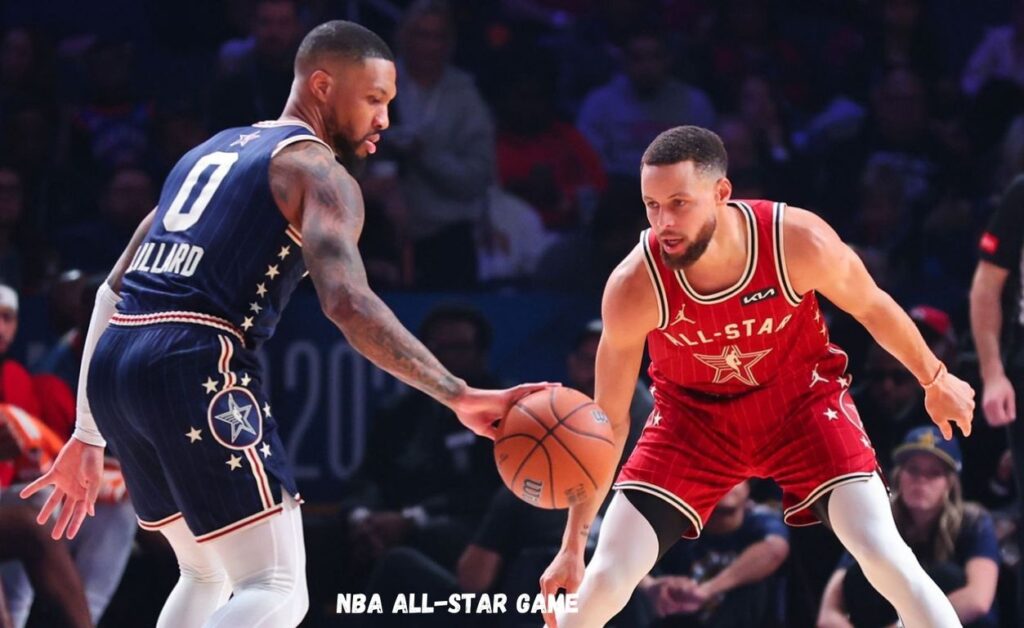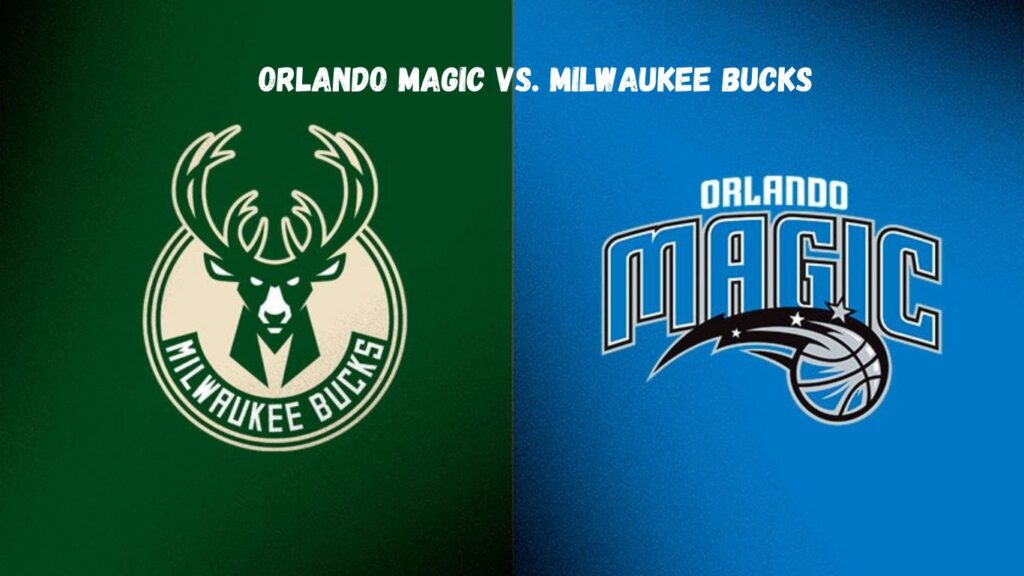Player Statistics for the Utah Jazz vs. Los Angeles Lakers Match: Each possession and effort are significant in the NBA. The Utah Jazz’s recent match against the Lakers was not entirely characterised by the numbers.
This comprehensive examination provides a comprehensive examination of the player statistics that determined the victor. It examines more than just the individual who scored the most points; it also considers the critical efficiency metrics, defensive contributions, and momentum-shifting plays that were instrumental in the outcome.
Storyline at the outset: “More Than Just Another Game”
In a contest that appeared to be more than just another regular-season game, the Utah Jazz faced off against the Lakers. Prior to the game, the primary topics of discussion were the potential for LeBron James to achieve another significant milestone in his career and the Jazz’s competitiveness, despite their ongoing reconstruction process.
- The outcome was a tale of two distinct styles: the Lakers, who were adorned with a star-studded lineup, heavily depended on their seasoned veterans, while the Jazz, who were younger, demonstrated their depth and newfound capabilities.
- The actual complexity of the game is not demonstrated by the final score of 117–103 Lakers. Up until the fourth quarter, when the contest concluded, fans were on the brink of their seats.
- Darvin Ham, the head coach of the Los Angeles Lakers, stated, “This game was about trusting the process and making changes.” “The statistics indicate that we were able to establish a rhythm in the end, but Utah made us work hard for every ball.”
- The game was ultimately determined by the shooting disparity between the two teams. Utah attempted 96 more shots than the Lakers, yet they only managed to make 41.7% of their field goal attempts, while the Lakers made 48.3%.
Battle of the Stars: LeBron James and Lakers’ Markkanen
The primary individual match was between Lauri Markkanen, who is rapidly ascending to prominence in Utah, and LeBron James, who appears to age indefinitely. Despite the fact that both competitors exerted significant effort, their impacts evolved throughout the course of the game.
- LeBron’s dominance was most evident during the third quarter. He assisted five times and scored 14 points, which facilitated the Lakers’ initial double-digit lead and a 12–2 run. He repeatedly exploited imbalances against smaller Jazz players to demonstrate his basketball intelligence.
- Markkanen maximised his impact during the initial half, scoring 17 of his 25 points and ensuring that the Jazz remained in the game by making opportune three-pointers and securing strong rebounds. However, the Lakers’ modifications to their defence rendered him less effective in the latter stages of the game.
- The scoring breakdown by quarter demonstrates that James was consistently effective, whereas Markkanen’s output decreased substantially in the second half.
How LeBron Scored in Each Quarter:
- Q1: Six points (3–5 free throws)
- Q2: Five points (2-3 free throws)
- Q3: 14 points (5-6 FG)
- Q4: Three points (0-3 free throws)
Markkanen’s quarterly scores are as follows:
- Q1: 10 points (4-7 FG)
- Q2: Seven points (3–5 FG)
- Q3: Four points (1-4 free throws)
- Q4: Four points (1-3 free throws)
LeBron demonstrated his ability to make plays when the defence collapses around him by making three passes without attempting a field goal in the final five minutes of the game, when the score was tied or within five points.
Interior Defence of the Jazz vs. Frontcourt of the Lakers
Walker Kessler of Utah and Anthony Davis engaged in a physical altercation in the paint, which significantly affected the outcome of the game. Ultimately, Davis’s adaptability prevailed over Kessler’s conventional role as a rim protector.
- In the end, Davis’s tally line was impressive: 23 points, 15 rebounds, 4 blocks, and a 9-16 shooting percentage from the field. It is even more remarkable that he achieved these figures while remaining seated for the majority of the fourth quarter, despite the fact that the game had already been decided.
- Walker Kessler demonstrated potential as a shot blocker with three rejections; however, he was unable to play more than 21 minutes due to his excessive fouling.
- This necessitated that Utah rely more on their reserve Kelly Olynyk, which created a defensive gap that the Lakers exploited with Davis and James.
The story was made obvious by the field goal rate at the basket:
- For the Lakers, 68.4% (26/38)
- 52.1% (25/48) of individuals who expressed an affinity for jazz did so.
In addition to the four rejections he made, Davis’s presence on defence altered numerous shots. When Davis was the primary defender, Utah’s shooters only converted 8 of 19 attempts, demonstrating his exceptional performance.
Guard Play: It is crucial to score and move the object.
Utah’s Collin Sexton and Jordan Clarkson faced off against the Lakers’ veteran D’Angelo Russell in a backcourt battle that was marked by significant disparities in style and skill.
- For the Lakers, Russell was the offensive mastermind. He achieved an extraordinary 4.5 assists-to-turnover ratio, having scored 18 points, dished out 9 assists, and only committed two turnovers.
- The Lakers’ guards were significantly more proficient in the pick-and-roll, as they scored 31 points as opposed to Utah’s 22. Russell’s ideal companion was Austin Reaves. While playing disruptive defence on the flanks, he contributed 14 points, 6 assists, and 2 steals.
- Utah’s backcourt scored approximately the same number of points; however, they encountered difficulties in maintaining possession and playing defence. Clarkson accumulated the most points (19) among all Jazz guards; however, he also committed the most errors (4) and had a plus/minus rating of -12.
Another evident distinction was the proficiency with which the guards executed three-point shots:
- Guards for the Lakers: 6/14 (42.9%)
- Jazz guards: 4 out of 13 (30.8%)
Anthony Davis, a seasoned Lakers player, stated, “Our guards establish the tone on defence. We are difficult to defeat when D’Lo and Austin make intelligent offensive decisions and pursue the ball aggressively.”
Bench Effect: Depth Difference
The game’s outcome was significantly influenced by the players who stepped off the bench, despite the fact that the starters established the foundation.
- Lonnie Walker IV (10 points) and Rui Hachimura (12 points, 5 rebounds) were two of the most significant scoring contributors for the Lakers’ reserves, which scored 34 points more than Utah’s.
- The Lakers’ bench performed exceptionally during a critical period in the second quarter while James was on the bench, enabling them to maintain the lead even after Utah’s top players returned.
- The Lakers’ coaching staff’s strategy of distributing the minutes resulted in their players remaining fresh for the critical fourth-quarter surge.
- Utah’s bench experienced some positive moments, such as Talen Horton-Tucker’s 11 points against his former team. However, their aggregate -31 plus/minus reflected the poor quality of their defence.
The game was effectively concluded when the Lakers embarked on a 14–4 run to begin the fourth quarter, which was facilitated by the Jazz reserves. Walker stated following the game, “Our second unit takes pride in maintaining leads.” “We are aware that our responsibility is to provide energy and score goals while our starters are able to rest.”
Game-changing sequences
In addition to the individual performances, there were a few critical sequences that significantly altered the game’s momentum and ultimately determined the winner:
- The Lakers’ Third-Quarter Surge: The Lakers opened the third quarter with a 16-6 surge, with LeBron making plays and Davis scoring inside, building on a five-point lead (54-51) at halftime.
- Powerful. They executed an exceptional shooting performance (7 of 9 field goals) and maintained a formidable defence that resulted in four Jazz turnovers in less than five minutes.
- The Jazz made an attempt to recuperate, but they were unsuccessful. Utah briefly threatened at 9:27 in the fourth quarter, reducing the lead to eight points. However, the Lakers secured a 19-point advantage by making four of five field goals in the subsequent three minutes, while the Jazz missed six consecutive shots.
- Russell’s Game-Changing Threes: In the late third quarter, as the Jazz were gaining confidence, D’Angelo Russell hit back-to-back three-pointers in 40 seconds, extending the Jazz’s lead to 10 points and obviously weakening Utah’s defence.
The statistical breakdown of these significant runs demonstrates their significance:
The third quarter of the Lakers’ game saw a 16–6 rampage.
- FG: 7–9 (77.8%)
- 3FG: 2–3 (66.7%)
- AST: 5 (LeBron: 3)
- REB: A 6-2 advantage.
- TO: 0 (forced 4)
Momentum-Shift by Russell (40 seconds):
- (8 points) from the three-point line and a sweeping layup.
- Answer from the Jazz: 0-3 field goals and 1 turnover.
- It shifted by +10 before and +16 after.
These sequences demonstrate the impact of brief surges of offence and defence on the outcome of a game in a manner that is not always evident from the statistics.
An Examination of Complex Metrics
In order to comprehend the true impact of each player on the team, it is necessary to look beyond conventional statistics. The Player Efficiency Rating (PER) and the True Shooting Percentage (TS%) provide insight into a player’s performance in a manner that may not be apparent from box scores:
- Utilise the following formula: % Player PERTS % Net Rating
- LeBron James: +18.3, or 28.4%, or 31.2
- Tony Davis: +14.9 24.1% + 28.7 61.2%
- Men accounted for 21.4% of D’Angelo Russell’s votes.
- Lauri Markkanen 23.8 -55.2% -6.8 -26.7%
- Jordan Clarkson 16.3 5.2.1% -12.4 25.0%
The closing unit of the Lakers, which consisted of James, Davis, Russell, Reaves, and Hachimura, was their most exceptional group. The group achieved an impressive +21.4 net rating in just 12 minutes. Utah’s most effective five-man unit (Sexton, Clarkson, Markkanen, Olynyk, and Kessler) maintained a +3.8 net rating; however, they were limited to a mere eight minutes of play due to Kessler’s frequent infraction calls, which impeded Utah’s ability to maintain its defensive identity.
The game’s fundamental patterns are further illuminated by the sophisticated monitoring data:
- The Lakers averaged 1.19 points per attempt when LeBron and Davis executed a pick-and-roll.
- In general, Utah’s defence conceded 1.08 points per play, which is significantly higher than their season average of 0.97.
- The Lakers scored 1.04 points per possession, while Utah scored 0.88 points per possession in the half-court offence.
- The Lakers’ superior offensive performance in half-court situations was the deciding factor, despite the fact that both teams had comparable opportunities to fast-break and transition. These statistics demonstrate this.
Coaching: The Factors That Influence Decisions
During the chess match between teachers Darvin Ham and Will Hardy, several statistical trends emerged that significantly influenced the outcome:
The Effectiveness of Timeouts:
- The Jazz were defeated by the Lakers 22–14 following the timeouts.
- Jazz: They only managed to score 0.78 points per play after taking timeouts.
Substitution Patterns: The Lakers’ rotation maintained the freshness of their players’ legs:
- LeBron James accumulated 34 minutes of action, which is the seventh highest total of the season.
- Anthony Davis: 32 minutes (season average: 35.8)
Simultaneously, Utah’s inadequate frontcourt necessitated additional playing time:
- Lauri Markkanen: 38 minutes (season average: 33.4)
- Kelly Olynyk: 20 minutes (season average: 14.2)
Modifications to defensive assignments: The Lakers’ decision to have Davis defend Markkanen in the second half was a critical decision that secured their victory.
- Markkanen scored 17 points against Davis in the first half, making 7-10 free throws.
- 2-9 field goals and 8 points for Markkanen against Davis in the second half.
Ham’s willingness to rotate defensive responsibilities contrasted with Hardy’s tendency to remain stationary. This resulted in anomalies that could be exploited by Hardy as the game progressed.The flexibility of the Lakers’ strategy was demonstrated by their superior defensive rating in the second half (102.4) compared to the first half (112.7). “We implemented the appropriate adjustments at halftime,” Ham stated. “The statistics indicate that our defence improved significantly, and that was the decisive factor in our victory.”
Common Questions
What unexpected player statistics from the Utah Jazz vs. Lakers game demonstrated the significance of LeBron’s contributions beyond scoring?
The true narrative was revealed by LeBron’s +18 plus/minus. His presence on the court resulted in a nearly 7% increase in the Lakers’ shooting efficiency, which was a significant improvement. Additionally, his 12 assists assisted his teammates in scoring 28 points, demonstrating his value in addition to his own 28 points. The most significant aspect of his performance was that Utah’s defence decreased by 14 points whenever he was on the court.
What was the way in which the reserve player statistics of the Utah Jazz vs. Lakers game revealed the unexpected disparity in strength between the two teams?
The raw numbers (34 points for the Lakers and 28 points for the Jazz) do not reveal the full story. The Lakers’ bench shot a scorching 51.9%, while Utah’s bench could only manage 37.9%. The true wake-up call? The bench for the Lakers had a plus/minus of +13, while the bench for Utah had a terrible -31. Rui Hachimura’s quiet 12-point, 5-rebound performance during a crucial stretch in the second quarter completely altered the flow of the game.
After the defence was altered in the Utah Jazz vs. Lakers game, which player’s statistics experienced the greatest decline?
Lauri Markkanen’s “tale of two halves” is particularly noteworthy. In the first half, he appeared unbeatable as he slammed the Lakers for 17 points on 70% shooting. However, things changed after halftime when Anthony Davis began to pursue him. Consequently, Markkanen only made 2 out of 9 shots (22%) and scored only 8 points in the second half. This single defensive move could have been the most significant moment of the game.
What were the concealed player statistics from the Utah Jazz vs. Lakers game that accounted for Utah’s defeat, despite the fact that they had a greater number of shots?
The solution to this puzzle is readily apparent when one examines efficiency measures. The Lakers only attempted 89 shots, while Utah attempted 96 and scored 14 fewer points. The reason for this discrepancy is that Utah had a lower true shot percentage (49.3%), while the Lakers had a significantly higher one (58.7%). The three-point difference is evident: the Lakers made 41.9% of their three-point shots, while Utah only made 28.1%. The Jazz’s extra seven shots were detrimental to them, as they were rushing the ball instead of obtaining quality opportunities.
In the Utah Jazz vs. Lakers match, which player, who was not expected to perform well, had the most impressive statistical performance?
Austin Reaves quietly compiled what may be the most impressive stat line in the game. As a result of the other exceptional performances, his 14 points on just 8 shots, 6 assists against 1 mistake, and team-high +19 plus/minus in just 29 minutes were not immediately apparent. His true shooting rate of 75% was the highest among all players who took more than 5 shots, and opponents only made 3 out of 11 shots when he was the primary defender.
How did the Utah Jazz’s fast-break statistics in the Utah Jazz vs. Lakers game contradict the team’s season-long trend?
The Lakers (ranked 22nd in fast-break points) dominated the transition game, defeating the Jazz (ranked 8th) by an astonishing 23–14 score. This nine-point advantage in an area where Utah typically excels was crucial. The reason for this unusually high number of mistakes (18) by Utah was that it resulted in 11 fast-break opportunities for the Lakers, transforming season averages into peculiar one-game outliers.
In what match-up-time did the Utah Jazz vs. Lakers player statistics demonstrate the dearth of knowledge between the two teams?
In the final five minutes, the score significantly deteriorated. Despite the close score, the Lakers converted five of seven shots (71.4%) in critical situations, while Utah converted only two of nine shots (22.2%) and committed three turnovers. LeBron and Davis each made all four of their shots during this period, while no Jazz player attempted more than one. This significant disparity in statistics demonstrated the stark contrast between a championship-caliber team and a young team that is still expanding its capabilities.
The Final Message of the Numbers
The detailed match player statistics display more than just the final score; they also display a few critical details that significantly influenced the outcome:
- LeBron’s Efficiency Over Volume: Although his scoring performance was not his strongest, his 58.8% field goal percentage and 4:1 assist-to-turnover ratio demonstrated that quality was more significant than quantity. His +18 plus/minus score also demonstrated his significant impact on the game.
- The Davis Defensive Difference: Anthony Davis revolutionised the Jazz’ offensive strategy. Utah’s shooting percentage was 41.7% when Davis was on the court, but it increased to 48.3% when he was off. Davis’ 15 rebounds, five of which were offensive, provided the team with crucial additional points.
- Backcourt Ball Security: The Lakers’ three guards, Russell, Reaves, and Schröder, committed only four turnovers in 81 minutes. Conversely, Utah committed eleven backcourt errors that directly resulted in 16 Lakers points.
Bench Scoring Efficiency: The Lakers’ bench scored approximately the same number of points (34), but they did so less efficiently:
- Bench for the Lakers: 14-27 field goals (51.9%)
- 11 of 29 free throws were converted by the Jazz bench, resulting in a 37.9% success rate.
- Three-Point Shooting Difference: The Lakers made 13 of 31 three-pointers (41.9%), while Utah made only 9 of 32 (28.1%). This disparity of 12 points was nearly identical to the final score.
Statistical turning moments were evident at critical junctures in history:
- Markkanen was the player to whom Davis turned at 9:42 in the third quarter.
- Russell made consecutive three-pointers at 2:15 in the third quarter.
- Walker IV initiated a 10-point surge at 8:35 in the fourth quarter, which resulted in a 19-17 score.
The achievement metrics indicate both positive indicators and areas for improvement:
- Because of their improved communication with their defence, the Lakers only conceded 103 points, which is lower than their season average of 109.7.
- Utah’s 28 assists on 40 made field goals (70%) demonstrated their continued dedication to the movement of the ball, despite their loss.
- The Lakers’ 14 offensive rebounds provided them with a physical advantage that they will need to maintain in order to compete with the most talented teams in the Western Conference.
Ultimately, this game demonstrated that NBA games are frequently decided by statistical advantages in efficiency, rather than merely basic counting statistics. Despite the Jazz’s increased number of attempts (96 vs. 89), the Lakers emerged victorious due to their superior shooting, increased number of free throws made (15-19 vs. 14-20), and increased number of three-pointers made. The performance of LeBron James and Anthony Davis has maintained the optimism of Lakers fans that their team will advance to the semifinals.
The Jazz are in the process of reshaping their squad, and Markkanen’s development and their overall competitive spirit in the face of a much more experienced opponent provide them with genuine optimism for the future.



